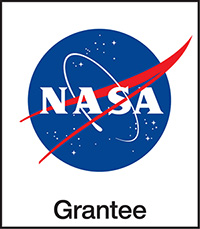Full Educator Guides
CONTEXT SETTING
ACTIVITIESCONTEXT SETTING
ACTIVITIES
ACTIVITIES
How to Teach These Units
Take a little time to prepare and get ready to teach. The pages linked below give you an easy-to-follow checklist and resources that get you prepared for facilitating PLANETS activities.
7. The Final Test: Improving a Remote Sensing Device
Learners improve their remote sensing devices by making them easier to use, more compact, or better able to gather high-quality data.
Guiding Question
How can we improve our remote sensing devices?
Activity Downloads
- 1
- 2
- 3
 Activity Timing
Activity Timing
10 MIN. Get Ready & Team Up
25 MIN. Improve and Test
10 MIN. Reflect
45 MIN. TOTAL
Setup: Prep Time 35 min
- Copy Share-Out invitations
- Set up Space Screens and Materials Table
*See Materials & Preparation in the Educator Guide linked above for full info.
21st Century Skills
- Collaboration
- Creativity
- Critical Thinking
Habits of Mind
- Make evidence-based decisions.
- Persist and learn from failure.
Learners Will Do
- Use test results to improve designs.
Learners Will Know
- Engineers reflect upon, alter, and improve their designs.
Connecting Across Activities
- Activity 6: Put It Together: Last time, learners combined tools and systems from previous Activities and used their engineering design process to design and test remote sensing devices.
- Activity 7: The Final Test: Today, they use what they learned from testing to improve their devices.
- Activity 8: Spread the Word: Next time, they will plan to share their designs at an Engineering Share-Out.
Level Up!
- Room on a spacecraft is usually very limited, so another way to improve a remote sensing device is to make it as small and compact as possible. Share examples of spacecraft with multiple remote sensing instruments, such as the Mars Reconnaissance Orbiter. Learners can challenge themselves to make their remote sensing devices compact enough to fit into a box of a specific size. To make the box, fold a piece of paper in half to form a 8.5″ × 5.5″ rectangle. Challenge learners to fit their devices on the rectangle. (10 min.)
- Refer to the Engineering Design Process poster (PDF). Ask: What steps of the Engineering Design Process did you use today? (We improved our remote sensing devices and tested them again.)

